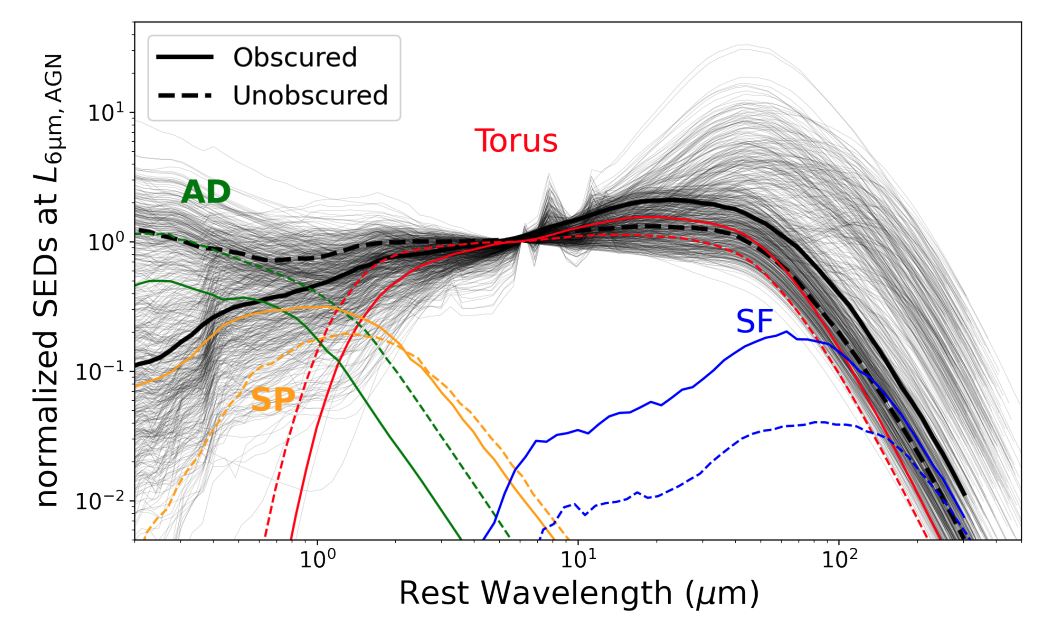CEA News, December 2022
A panchromatic view of infrared quasars: excess star formation and radio emission in the most heavily obscured systems
To understand the active galactic nuclei (AGNs) phenomenon and their impact on the evolution of galaxies, a complete AGN census is required; however, finding heavily obscured AGNs is observationally challenging.
 Figure 5 in the paper, this shows composite and individual best-fitting SED models for the
IR quasar sample. Thick continuous and dotted curves represent the median SED for the obscured
and unobscured quasars, respectively. The figure also shows the median SED of each component:
the accretion disk (green), the stellar population emission (orange), the torus (red), and the
dust-obscured SF (blue).
Figure 5 in the paper, this shows composite and individual best-fitting SED models for the
IR quasar sample. Thick continuous and dotted curves represent the median SED for the obscured
and unobscured quasars, respectively. The figure also shows the median SED of each component:
the accretion disk (green), the stellar population emission (orange), the torus (red), and the
dust-obscured SF (blue).
A recent paper led by astronomers at the CEA utilizes the deep and extensive multiwavelength data in the COSMOS field to select a complete sample of 578 infrared (IR) quasars at z < 3, with minimal obscuration bias, using detailed UV-to-far-IR spectral energy distribution (SED) fitting. They complement our SED constraints with X-ray and radio observations to further investigate the properties of the sample.
Overall, 322 of the IR quasars are detected by Chandra and have individual X-ray spectral constraints. From a combination of X-ray stacking and L_2−10kev - L_6μm analyses, the authors show that the majority of the X-ray faint and undetected quasars are heavily obscured (many are likely Compton thick), highlighting the effectiveness of the mid-IR band to find obscured AGNs. They find that 355 (≈61 per cent) IR quasars are obscured and identify differences in the average properties between the obscured and unobscured quasars: (1) obscured quasars have star formation rates ≈3 times higher than unobscured systems for no significant difference in stellar mass and (2) obscured quasars have stronger radio emission than unobscured systems, with a radio-loudness parameter ≈0.2dex higher. These results are inconsistent with a simple orientation model but in general agreement with either extreme host-galaxy obscuration towards the obscured quasars or a scenario where obscured quasars are an early phase in the evolution of quasars.

